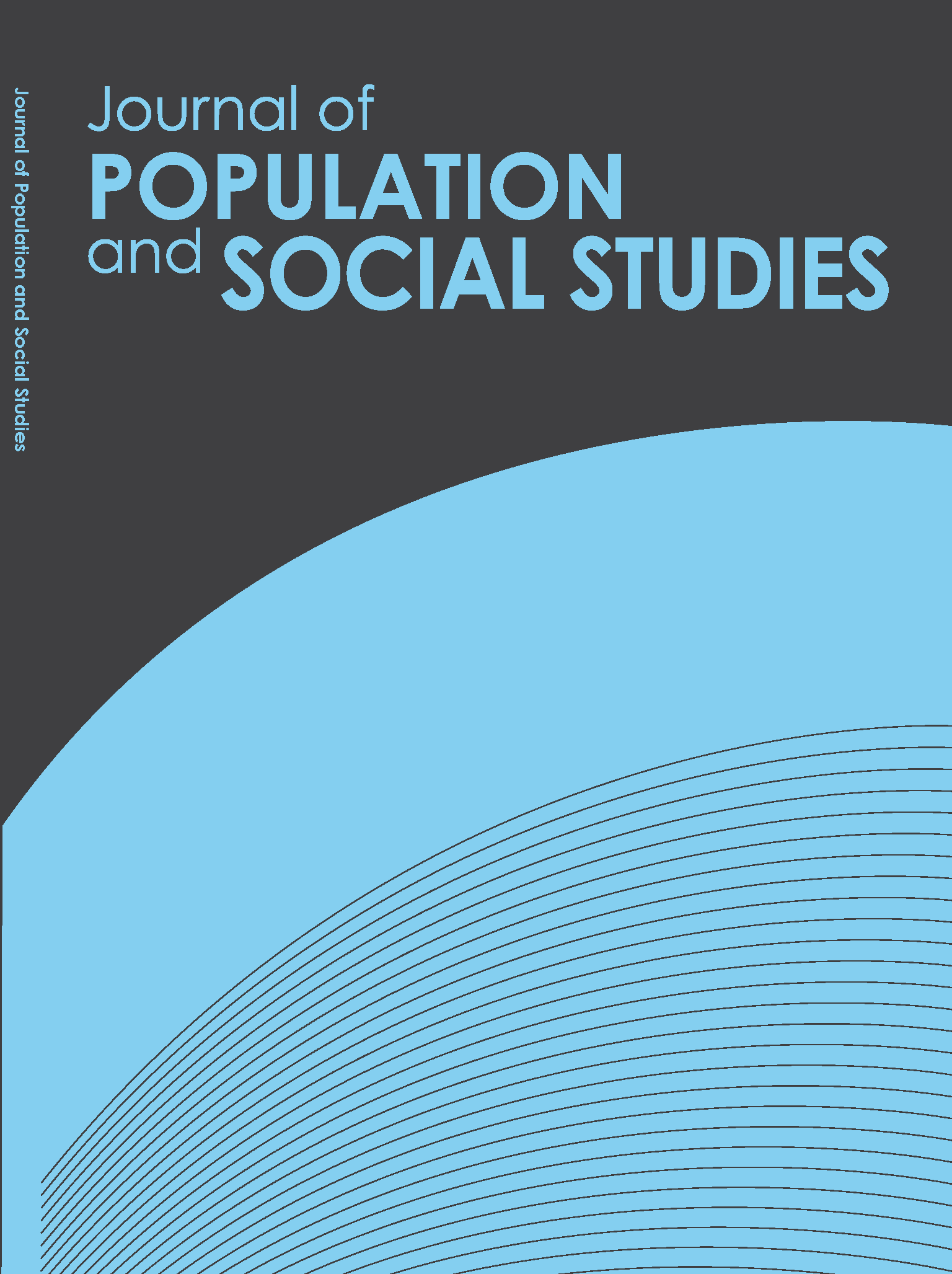Educational Attainment and Its Contribution to Labor Productivity Growth in Thailand
Main Article Content
Abstract
Article Details
References
• Aggrey, N., Eliab, L. & Joseph, S. (2010). Human Capital and Labor Productivity in East African Manufacturing Firms. Current Research Journal of Economic Theory, 2(2), 48 – 54.
• Ali, N., Tabari, Y. & Reza, M. (2012). Technology and Education Effects on Labor Productivity in the Agricultural Sector in Iran. European Journal of Experimental Biology, 2 (4), 1265 – 1272.
• Aljuhani, M.S.M. (2002). Labour’s Utilization and Labour’s Productivity of a Gold Mine in Saudi Arabia. Journal of The South African Institute of Mining and Metallurgy, July/August 2002, 207 – 310.
• Birchenall, J.A. (2001). Income Distribution, Human Capital and Economic Growth in Colombia. Journal of Development Economics, 66(1), 271 – 287.
• US Bureau of Labor Statistics (BLS). (2009). BLS Handbook of Methods: Chapter 11 Industry Productivity Measures. Retrieved from http://www.bls.gov/opub/hom/ homch11_a.htm.
• Ceccobelli, M., Gitto, S. & Mancuso, P. (2012). ICT Capital and Labour Productivity Growth: A Non-Parametric Analysis of 14 OECD Countries. Telecommunication Policy, 36(4), 282 – 292.
• Chansarn, S. (2012). Labor Productivity, Education and Their Linkage: Empirical Evidence from Thailand. NIDA Development Journal, 52(4), 39 – 54.
• Dritsakis, N. (2007). Labour Productivity, Wages and Unemployment: An empirical investigation for Greece using Causality Analysis. Asian – African Journal of Economics and Econometrics, 7(1), 133 – 145.
• Duryea, S. & Pages, C. (2002). Human Capital Policies: What They Can and Cannot Do for Productivity and Poverty Reduction in Latin America (Working Paper Series 468). Washington, D.C.: Inter-American Development Bank.
• Fallahi, F., Sojoodi, S. & Aslaninia, N. (2011). Determinants of Labor Productivity in Iran’s Manufacturing Firms: With Emphasis on Labor Education and Training. Paper Presented at the International Conference on Applied Economics 2011, Perugia, Italy, August 25 – 27, 2011.
• Freeman, R. (2008). Labour Productivity Indicators: Comparison of Two OECD Databases Productivity Differential & The Balassa-Samuelson Effect. Paris: Organization of Economic Co-Operation and Development.
• Golden, L. (2012). The Effects of Working Time on Productivity and Firm Performance: a Research Synthesis Paper (Conditions of Work and Employment Series No. 33). Geneva: International Labour Office.
• Gomez-Salvador, R., Musso, A., Stocker, M. & Turunen, J. (2006). Labour Productivity Development in Euro Area (Occasional Paper, No.53). Frankfurt am Main: European Central Bank.
• Guiteras, R.P. & Jack, B.K. (2012). Incentives, Productivity and Selection in Labor Markets: Evidence from Rural Malawi. Retrieved from http://www.econ.umd.edu/research/papers/607.
• International Labour Organization (ILO). (2013). Key Indicators of the Labour Market: Labour Productivity (KILM 17). Retrieved from http://kilm.ilo.org/2011/download/kilm17EN.pdf.
• Jajri, I. & Ismail, R. (2009). Technical Progress and Labor Productivity in Small and Medium Scale Industry in Malaysia. European Journal of Economics, Finance and Administrative Sciences, 15, 199 – 208.
• Knapp, D. (2007). The Influence of Health on Labor Productivity: An Analysis of European Conscription Data. (Unpublished Senior Honor Thesis). Department of Economics, Ohio State University.
• Lanzi, D. (2007). Capabilities, Human capital and Education. Journal of Socio-Economics, 36(3), 424 – 435.
• Mahmud, M. & Rashid, A. (2006). Labor Productivity and Economic Growth, What Causes What: An Empirical Analysis. Journal of Management and Social Sciences, 2(1), 69 – 81.
• National Economic and Social Development Board (NESDB). (2011). Quarterly Gross Domestic Product. Retrieved from http://www.nesdb.go.th/Default.aspx?tabid=95.
• National Statistical Office (NSO). (2000). Population and Household Census 2000. Retrieved from http://www.nso.go.th.
• National Statistical Office (NSO). (2011). Labour Force Survey (Quarterly) 2001 – 2010. Retrieved from http://service.nso.go.th/nso/nso_center/project/search_center/23project-th.htm.
• Razzak, W. & Timmins, J. (2007). Education and Labor Productivity in New Zealand. Retrieved from http://mpra.ub.uni-muenchen.de/1882/1/MPRA_paper_1882.pdf.
• United Nations. (2010) World Population Prospect: The 2008 Revision Population Database. Retrieved from http://esa.un.org/unpp/index.asp?panel=1.
• Wooldridge, J.M. (2003). Introductory Econometrics (2nd ed.). Ohio: Thomson South-Western, pp. 461 – 475.


